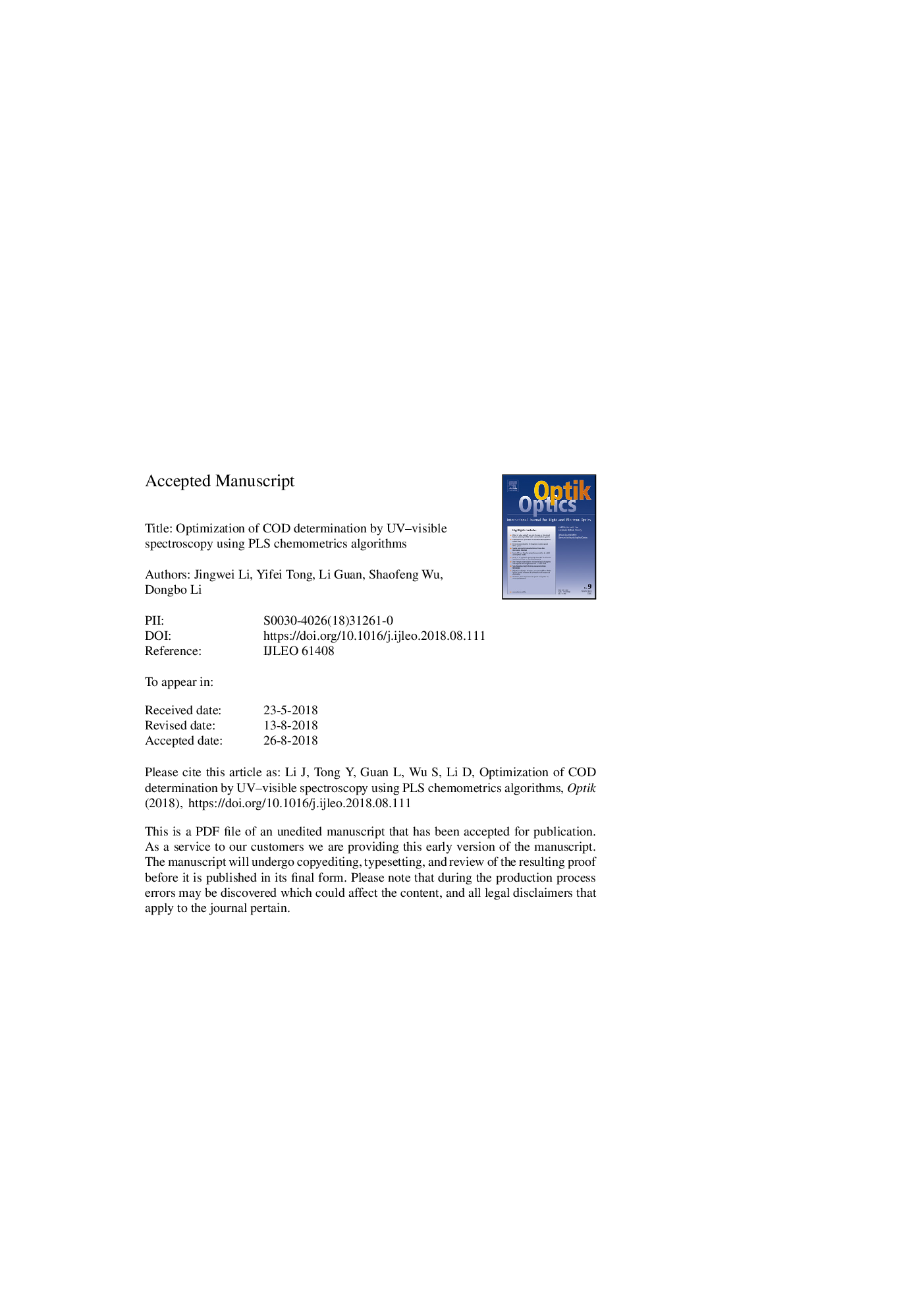| Article ID | Journal | Published Year | Pages | File Type |
|---|---|---|---|---|
| 10134246 | Optik - International Journal for Light and Electron Optics | 2018 | 17 Pages |
Abstract
Ultraviolet-visible (UV-vis) spectroscopy combined with chemometrics tools were used to determine chemical oxygen demand (COD) content in the water. 144 samples needed for the research were collected from the Qian Lake in Nanjing. UV-vis spectra (193.91-1121.69ânm) were collected and processed by various preprocessing methods. The samples were divided into calibration set and prediction set by sample set portioning based on joint x-y distance (SPXY) method. Then the spectra were optimized and modeled by interval partial least squares (iPLS), synergy interval partial least squares (siPLS) and moving windows partial least squares (mwPLS). Optimized COD prediction models were established and compared with full-spectrum partial least squares (PLS) models. Model performance was evaluated by the correlation coefficient of the prediction set (Rpred) and the root mean square error of prediction (RMSEP). The results demonstrate that the prediction results of PLS models established by the three spectral interval selection methods are superior to the full-spectrum PLS model. Furthermore, the siPLS model has the best performance (Rpredâ=â0.8334; RMSEPâ=â2.63). Therefore, the siPLS is the best COD prediction model obtained in this research, which can effectively select optimal spectral intervals and improve the prediction performance of the model.
Related Topics
Physical Sciences and Engineering
Engineering
Engineering (General)
Authors
Jingwei Li, Yifei Tong, Li Guan, Shaofeng Wu, Dongbo Li,
